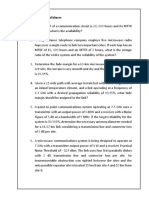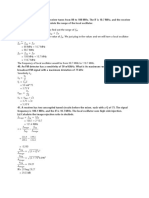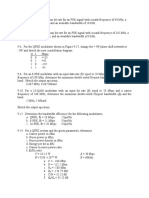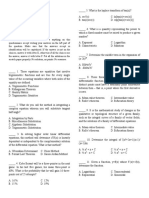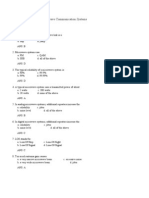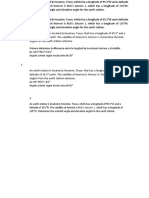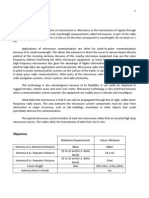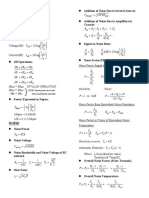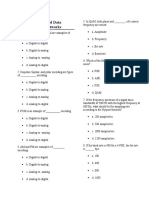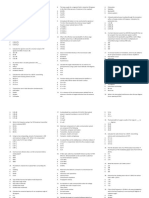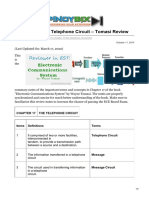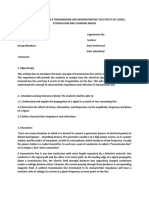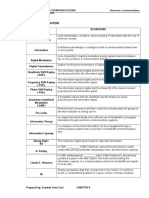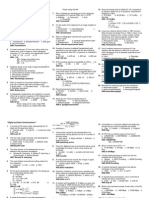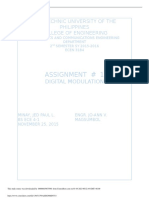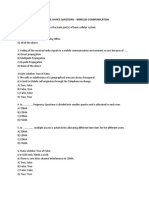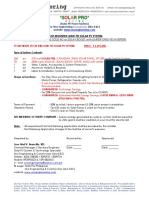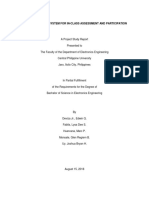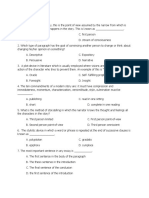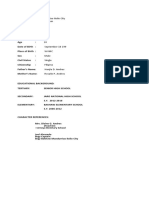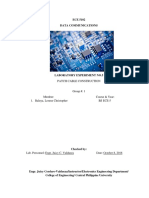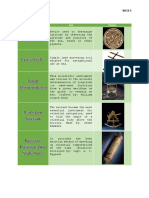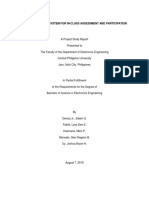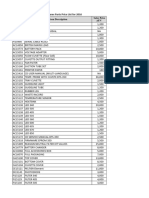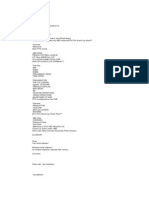0% found this document useful (0 votes)
649 views2 pagesSoln To Some Problems
This document contains sample exam problems and their solutions related to microwave system design and analysis. It provides calculations for path loss, noise power, minimum transmit power, reliability loss, and system parameters like fade margin, antenna gain, losses, and noise figures given frequency, distance, bandwidth, temperature, gain, carrier-to-noise ratio, and other input values. The responses include numeric values for path loss, noise power, fade margin, antenna gain, losses, noise figures, minimum carrier power and transmit power.
Uploaded by
Edwin Quinlat DevizaCopyright
© © All Rights Reserved
We take content rights seriously. If you suspect this is your content, claim it here.
Available Formats
Download as PDF, TXT or read online on Scribd
0% found this document useful (0 votes)
649 views2 pagesSoln To Some Problems
This document contains sample exam problems and their solutions related to microwave system design and analysis. It provides calculations for path loss, noise power, minimum transmit power, reliability loss, and system parameters like fade margin, antenna gain, losses, and noise figures given frequency, distance, bandwidth, temperature, gain, carrier-to-noise ratio, and other input values. The responses include numeric values for path loss, noise power, fade margin, antenna gain, losses, noise figures, minimum carrier power and transmit power.
Uploaded by
Edwin Quinlat DevizaCopyright
© © All Rights Reserved
We take content rights seriously. If you suspect this is your content, claim it here.
Available Formats
Download as PDF, TXT or read online on Scribd
/ 2
